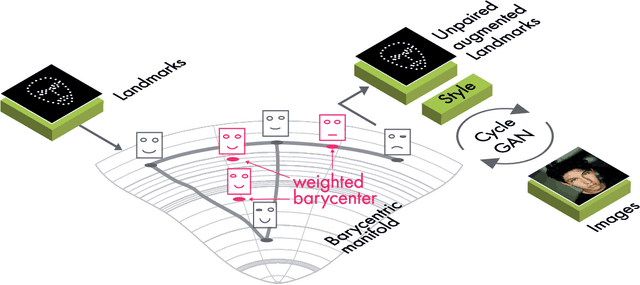Data Augmentation with Manifold Barycenters
Paper and Code
Apr 02, 2021



The training of Generative Adversarial Networks (GANs) requires a large amount of data, stimulating the development of new data augmentation methods to alleviate the challenge. Oftentimes, these methods either fail to produce enough new data or expand the dataset beyond the original knowledge domain. In this paper, we propose a new way of representing the available knowledge in the manifold of data barycenters. Such a representation allows performing data augmentation based on interpolation between the nearest data elements using Wasserstein distance. The proposed method finds cliques in the nearest-neighbors graph and, at each sampling iteration, randomly draws one clique to compute the Wasserstein barycenter with random uniform weights. These barycenters then become the new natural-looking elements that one could add to the dataset. We apply this approach to the problem of landmarks detection and augment the available landmarks data within the dataset. Additionally, the idea is validated on cardiac data for the task of medical segmentation. Our approach reduces the overfitting and improves the quality metrics both beyond the original data outcome and beyond the result obtained with classical augmentation methods.
 Add to Chrome
Add to Chrome Add to Firefox
Add to Firefox Add to Edge
Add to Edge